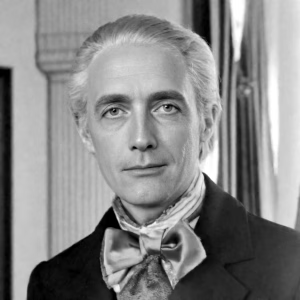
Fritz Reuter Leiber (December 24, 1910–September 5, 1992) was a star among speculative fiction authors, a name synonymous with sword and sorcery alongside Robert E. Howard and Jack Vance. Born into a theatrical family, Fritz Leiber initially pursued acting alongside his parents’ Shakespeare company before earning an undergraduate Ph.B. in psychology and physiology at the University of Chicago, and briefly studied for the ministry. Though he explored philosophy graduate work, Leiber embarked on a literary career, publishing early stories in 1934–35 and even appearing in films like Camille and The Hunchback of Notre Dame. A formative correspondence with H.P. Lovecraft spurred his development as a writer, culminating in the 1939 debut of his iconic characters Fafhrd and the Gray Mouser.
Leiber balanced writing with diverse roles—encyclopedia staff writer, speech instructor, and associate editor of Science Digest—while navigating personal struggles including pacifism during World War II and later, alcoholism. Despite periods of hardship, he achieved lasting recognition for his science fiction and fantasy, notably through the licensing of Fafhrd and the Gray Mouser to TSR, Inc., allowing him to write full-time.
Leiber’s impact on the science fiction and fantasy landscape is undeniable. While Howard popularized raw adventure, and Vance crafted baroque elegance, Leiber carved out a unique niche: psychological realism within genre frameworks. His stories often explored the gray areas of morality, the complexities of human motivation, and the subtle horrors lurking beneath the surface of seemingly fantastical worlds. He wasn’t interested in grand cosmic battles or simplistic good-versus-evil narratives; he was fascinated by how individuals reacted to extraordinary events, their internal struggles as much as external challenges.
He pioneered what would later be termed “urban fantasy,” blending elements of horror and crime fiction with the supernatural. His Gray Mouser stories, beginning in 1939, were groundbreaking for their cynical protagonists and morally ambiguous adventures. But Leiber’s range was astonishing. He wrote historical fiction, detective novels, and even satirical pieces, always imbued with his distinctive voice—a blend of erudite prose and understated dread.
Stories like A Pail of Air, published in 1951, exemplify this unique approach. Set in a bleak, post-apocalyptic future where Earth has been dragged away from the sun by a rogue star, the narrative focuses not on the cataclysm itself, but on the desperate struggle for survival within a single family’s “nest.” The story’s power lies in its claustrophobic atmosphere and the chillingly mundane details of existence under unimaginable duress. A Pail of Air stands as a landmark work of post-apocalyptic fiction, prefiguring many themes later explored by authors like Cormac McCarthy and Margaret Atwood, and demonstrating an early focus on psychological realism in the genre. It eschews spectacle for intimate character study, focusing on the emotional toll of isolation and the constant threat of oblivion.
Leiber’s style is often described as “literary”—a deliberate choice that set him apart from many of his contemporaries. He favored complex sentence structures, evocative imagery, and measured pacing reminiscent of classic authors like Edgar Allan Poe and Ambrose Bierce. He wasn’t afraid to employ symbolism or explore philosophical questions, elevating his genre work beyond simple escapism. Howard’s prose was visceral and immediate; Vance’s ornate and descriptive; Leiber’s, carefully considered, almost archaeological in its precision. He sought not just to tell a story but to excavate the human spirit under pressure.
His influence can be seen in the works of Ursula K. Le Guin, who admired his exploration of cultural relativism, and Neil Gaiman, whose blending of fantasy and reality owes a clear debt to Leiber’s pioneering efforts. Fritz Leiber wasn’t merely a writer of genre fiction; he was a chronicler of uncertain futures, a master of psychological realism, and a profound observer of the human condition in all its fragility and resilience.